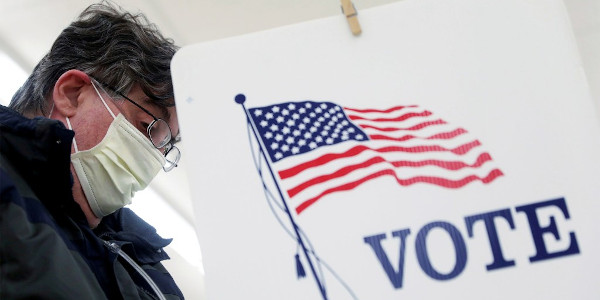Recommended by the MIT Election Lab
How to hold elections during a pandemic
The U.S. is the beacon of democracy around the world. Let’s show the world that no pandemic can stop our elections.

Casting a vote in Illinoise; (Daniel Acker/Reuters)
"The truth is that no one knows whom expanded absentee voting and drive-through voting would favor in November 2020. That should make it easier to set aside our partisan identities and do what is right for democracy."
— Joshua Kleinfeld, law professor at Northwestern University, and Rachel Kleinfeld, member of the bipartisan National Task Force on Election Crisis
Research and Perspectives for the Pandemic
Main Page | Elective Affinities
EXCERPT | THE NATIONAL REVIEW | APRIL 7, 2020
We might beat COVID-19 by fall. But if we don’t, what happens to our November election? Two principles are paramount. The election must be held. And people who want to vote must be able to do so without fear of infection and without worsening the pandemic. To uphold those principles, we must expand no-excuse absentee voting and make drive-through voting possible now.
Elections in a pandemic run two risks: spreading infection and diminishing democratic legitimacy. Iran’s COVID-19 cases surged after its February elections. Spain’s infections quintupled four days after a political rally in March; now Spain has requisitioned an ice rink to hold the dead. In Florida’s March primary, two poll workers contracted COVID-19, one of whom had handled voters’ driver’s licenses. In-person voting involves lining up and touching voting machines, which could be dangerous to voters without careful procedures. It also endangers poll workers, most of whom are over 60.
Full article at National Review
Suggested links